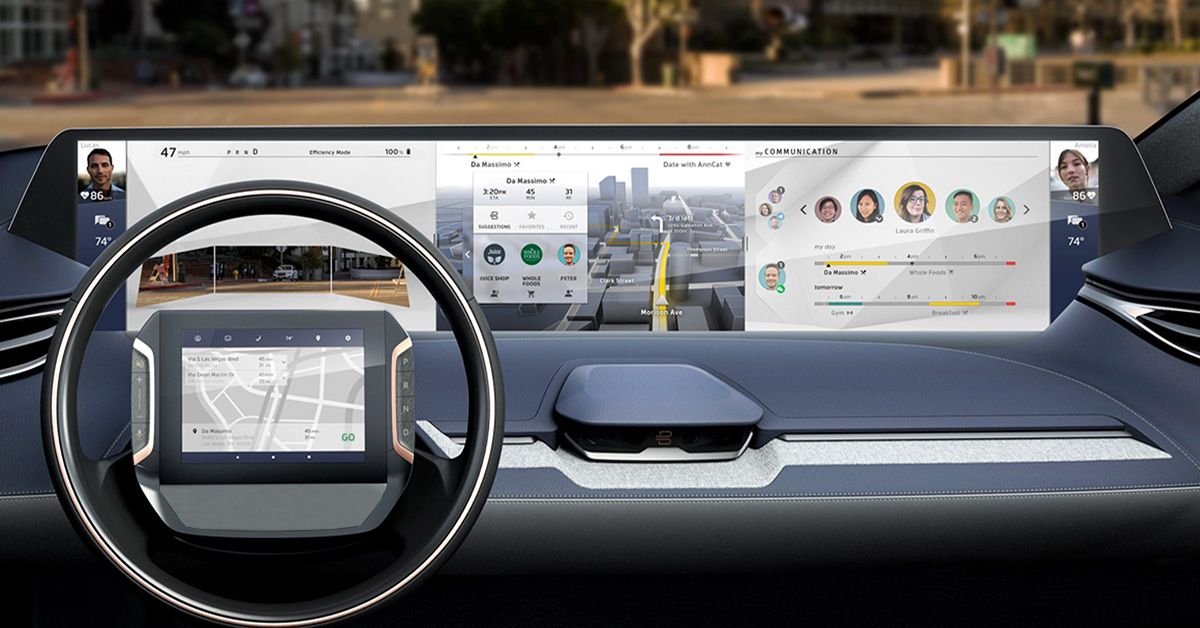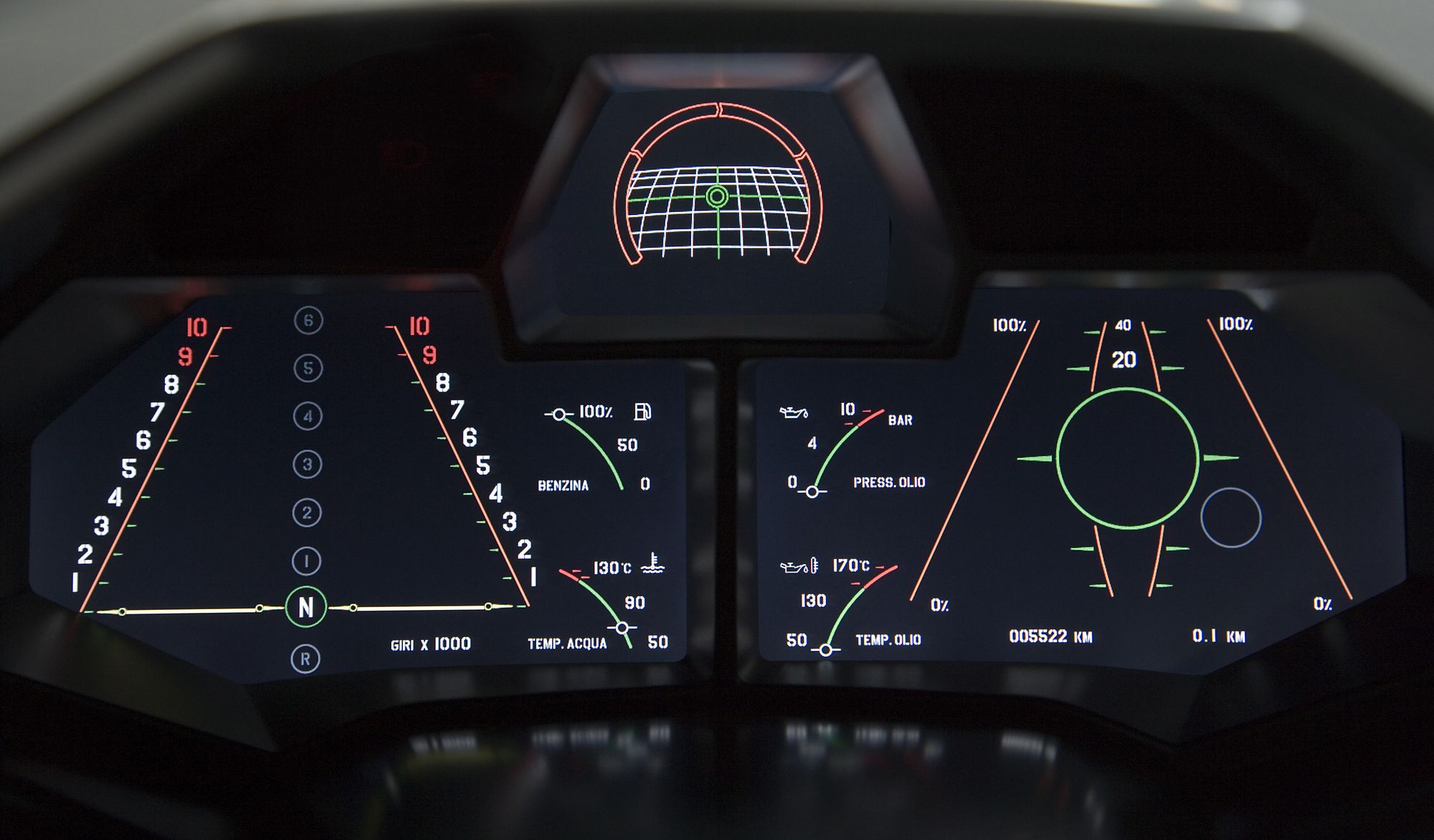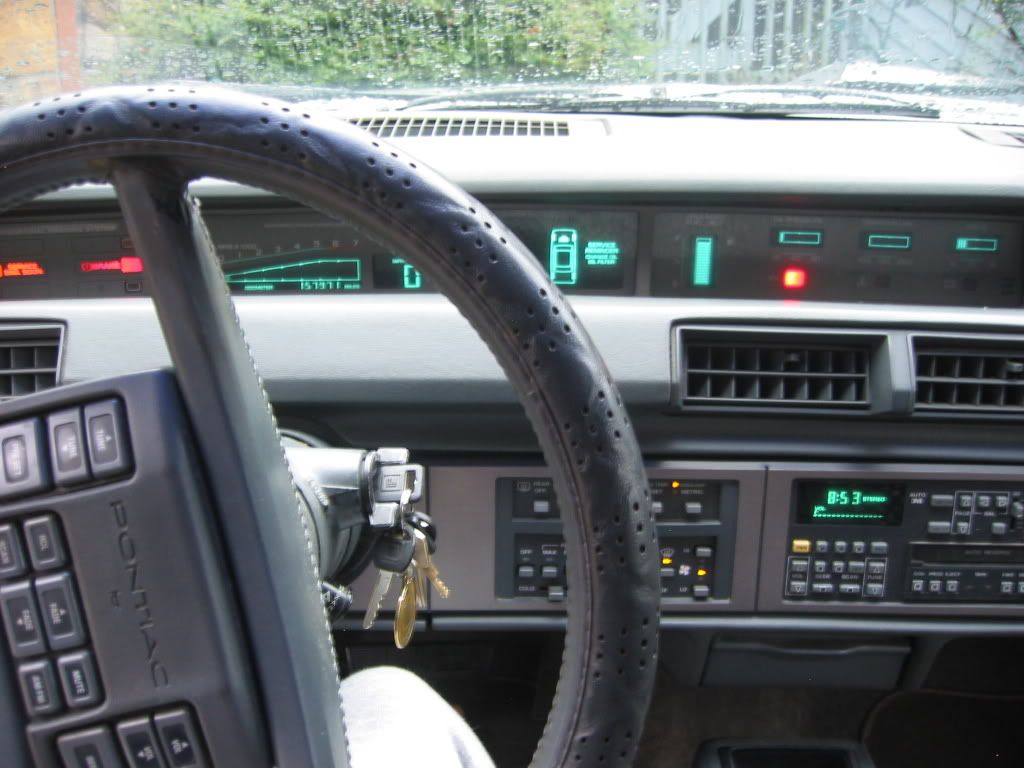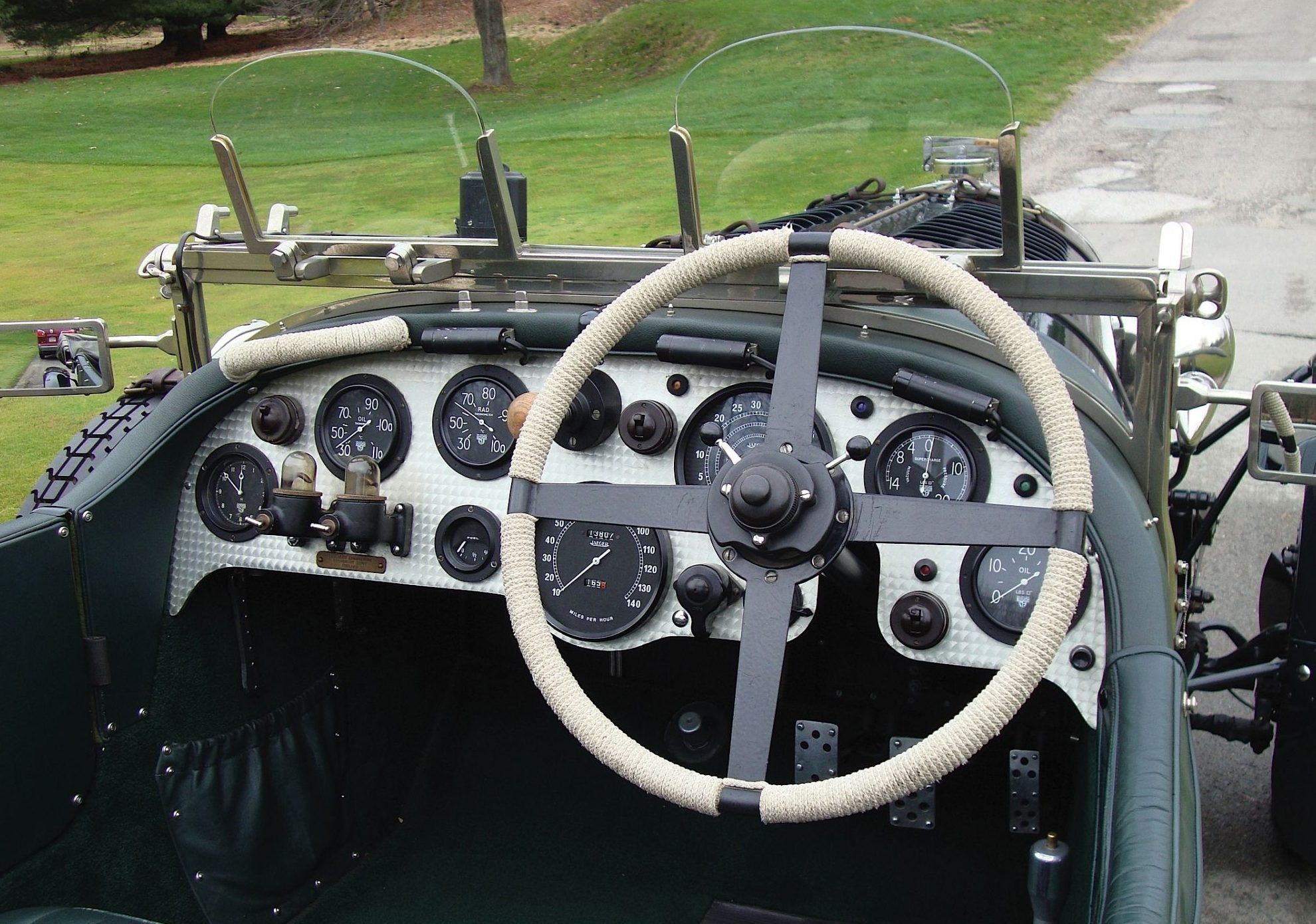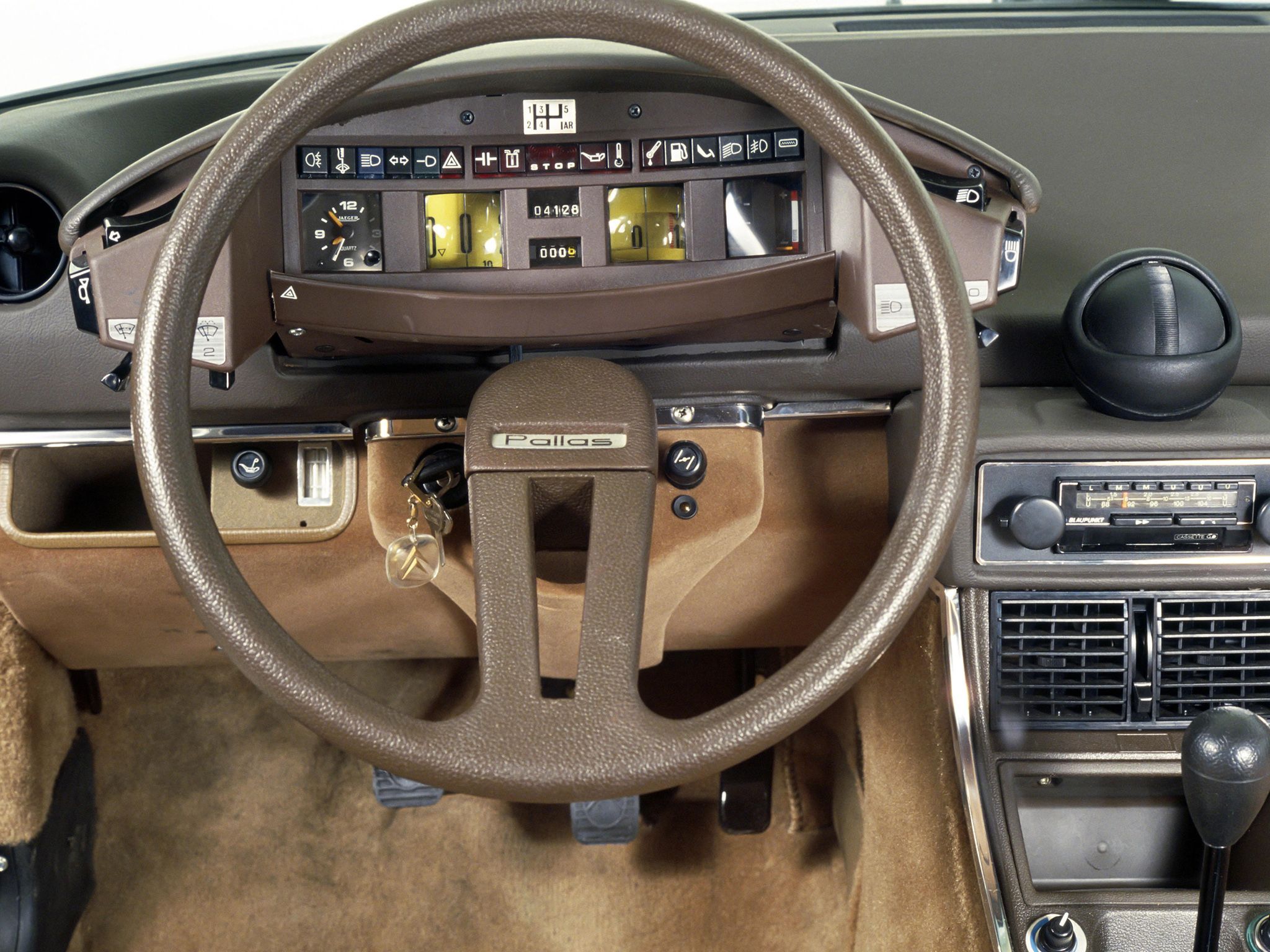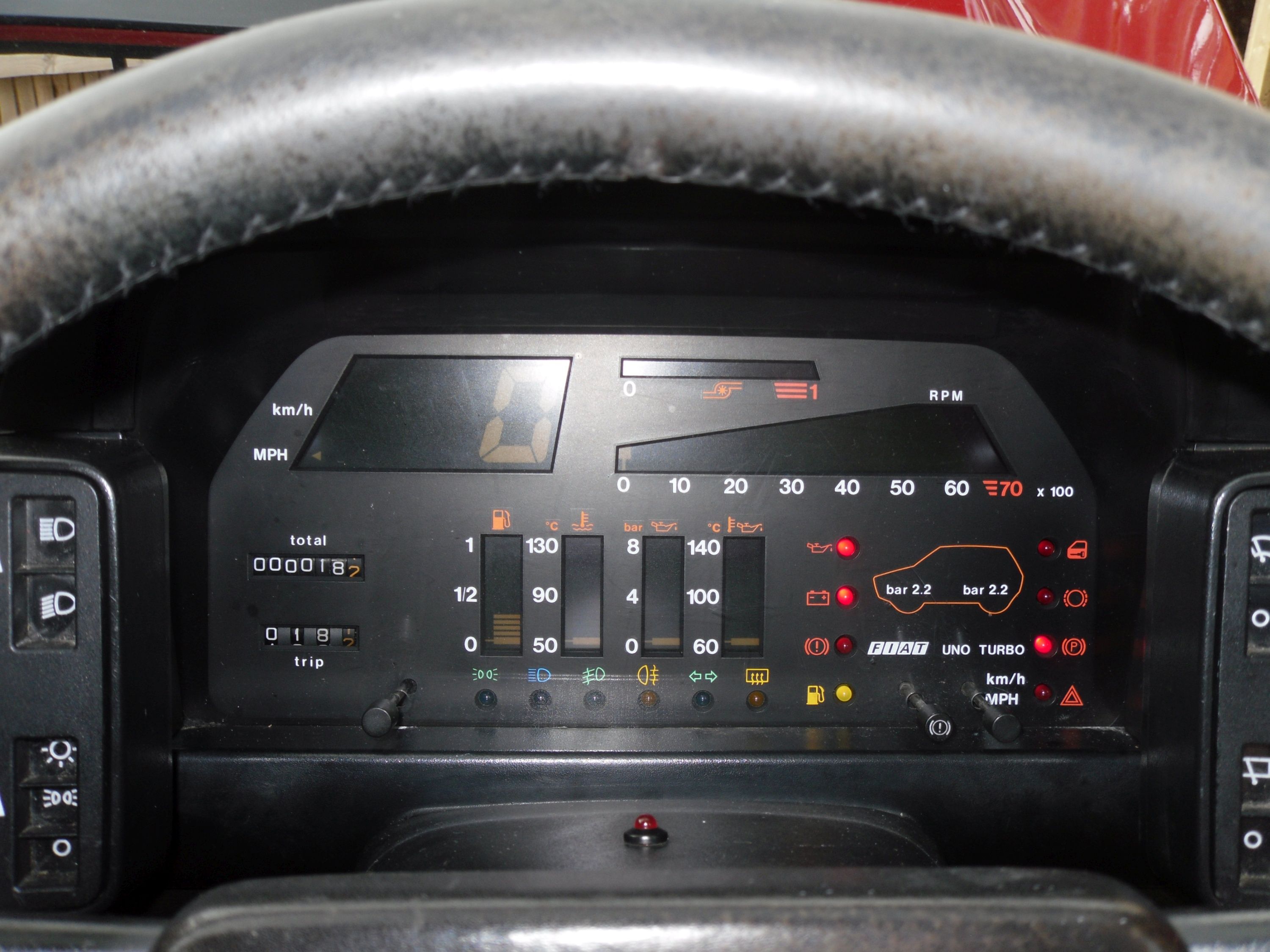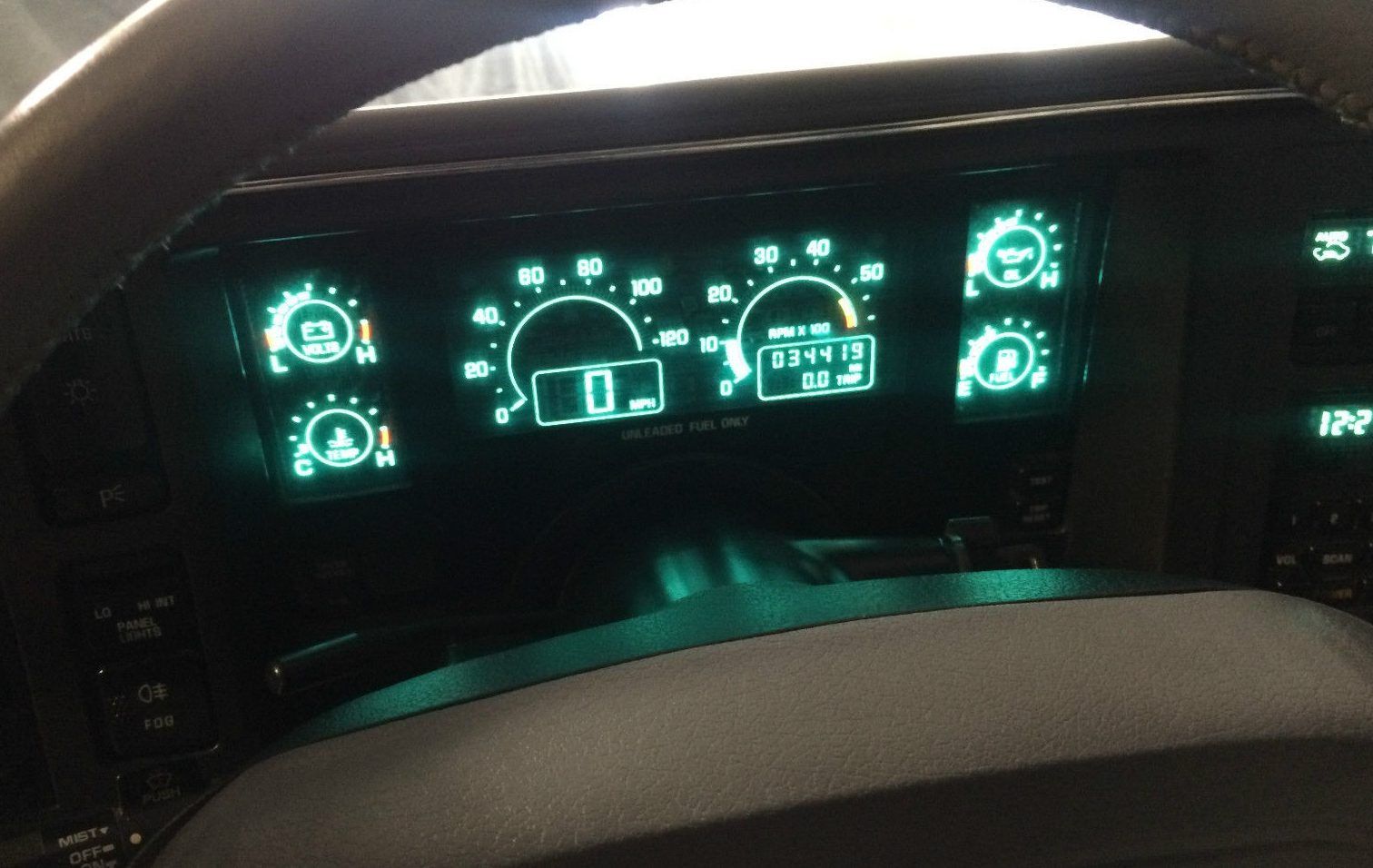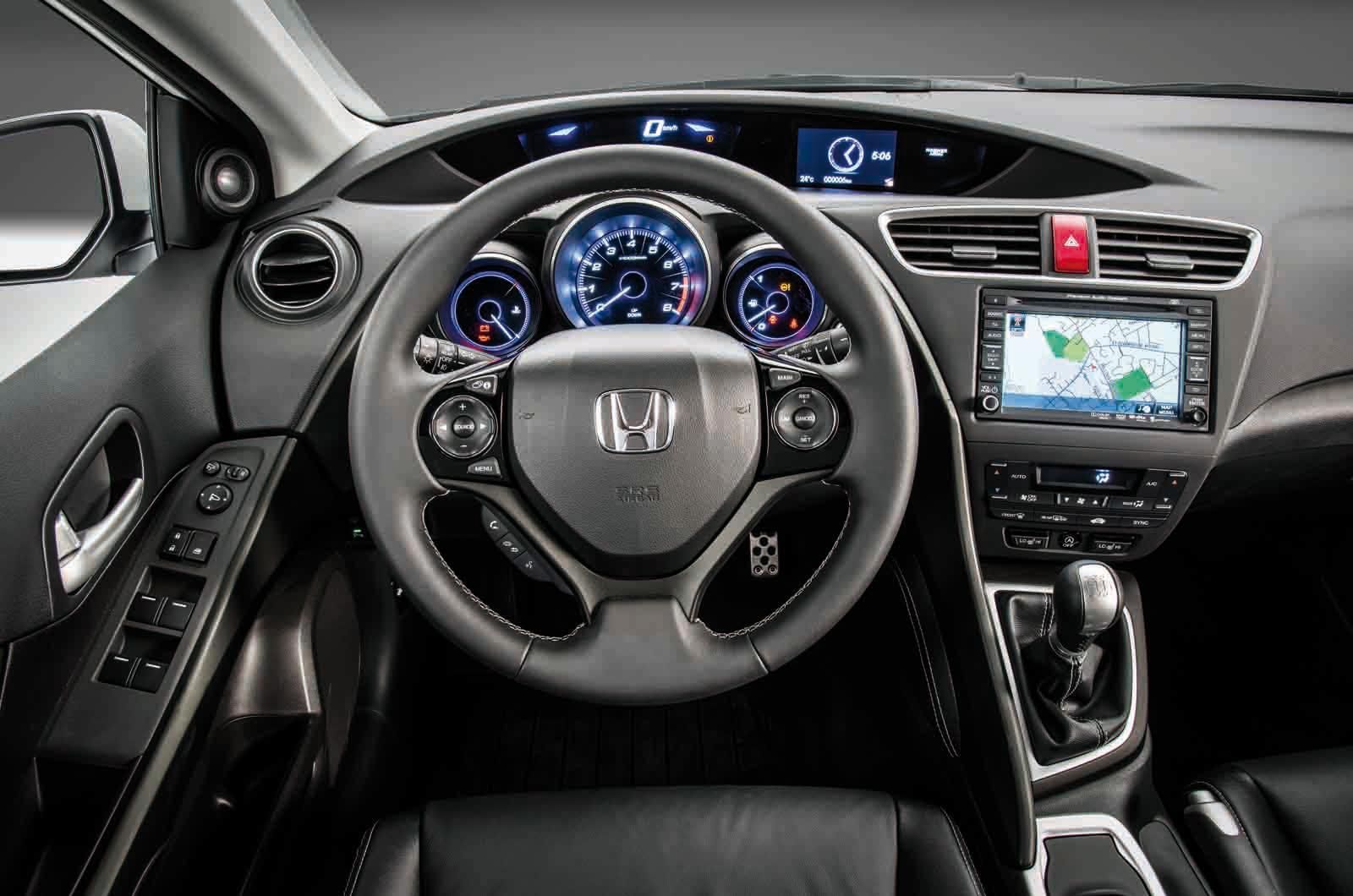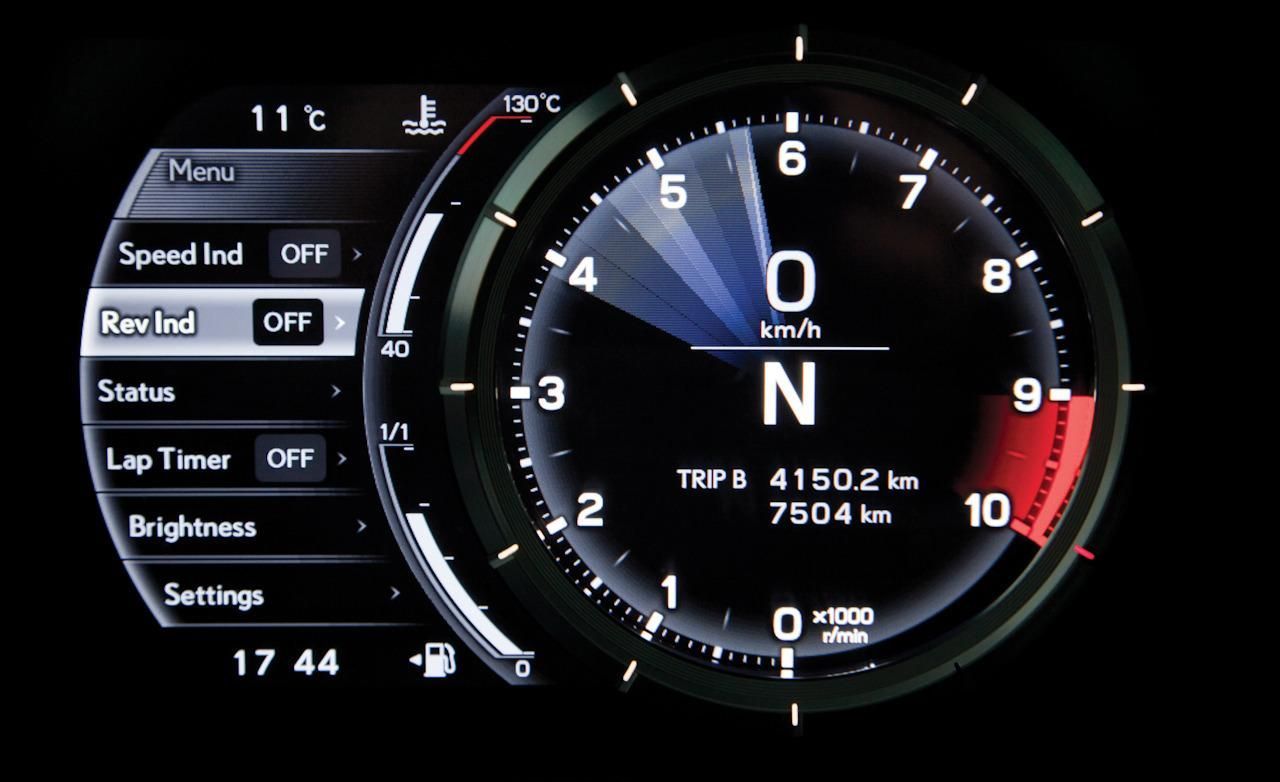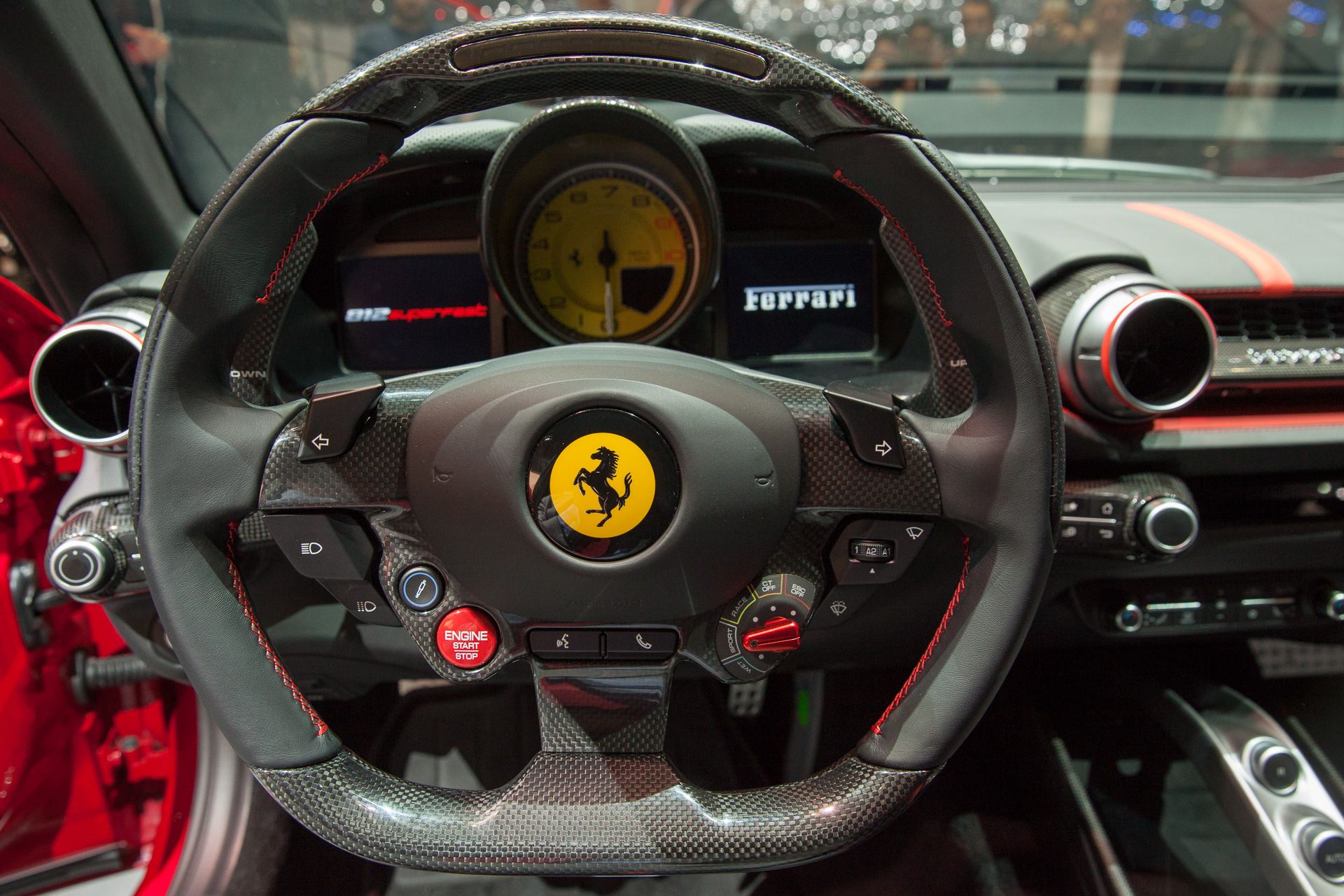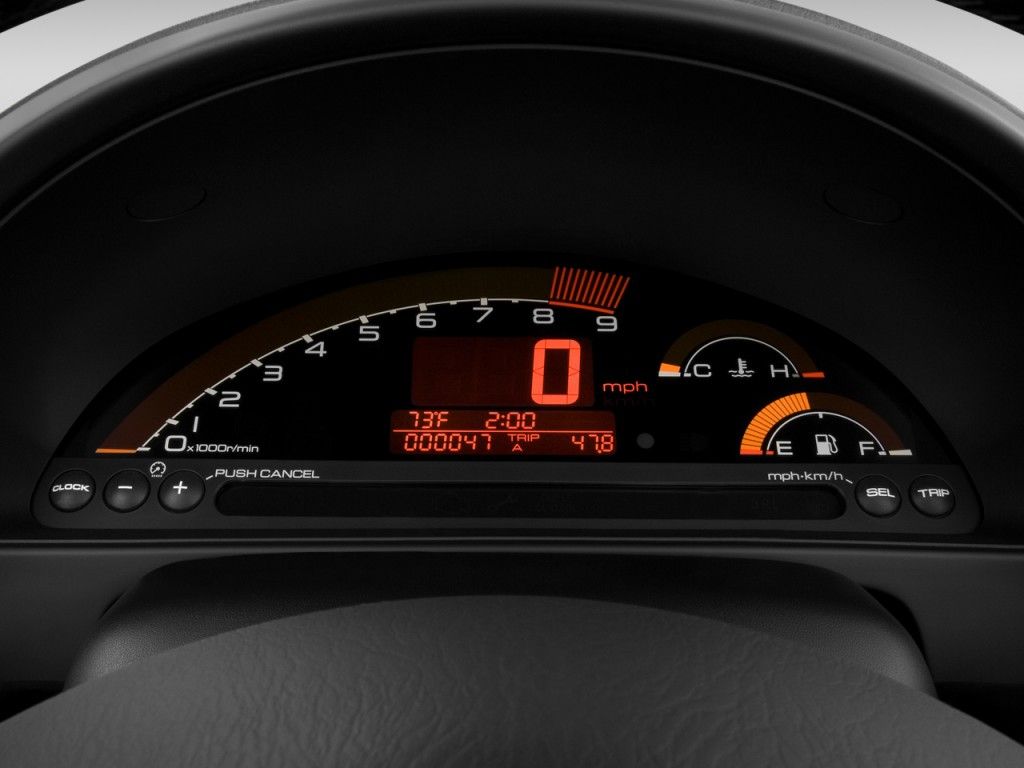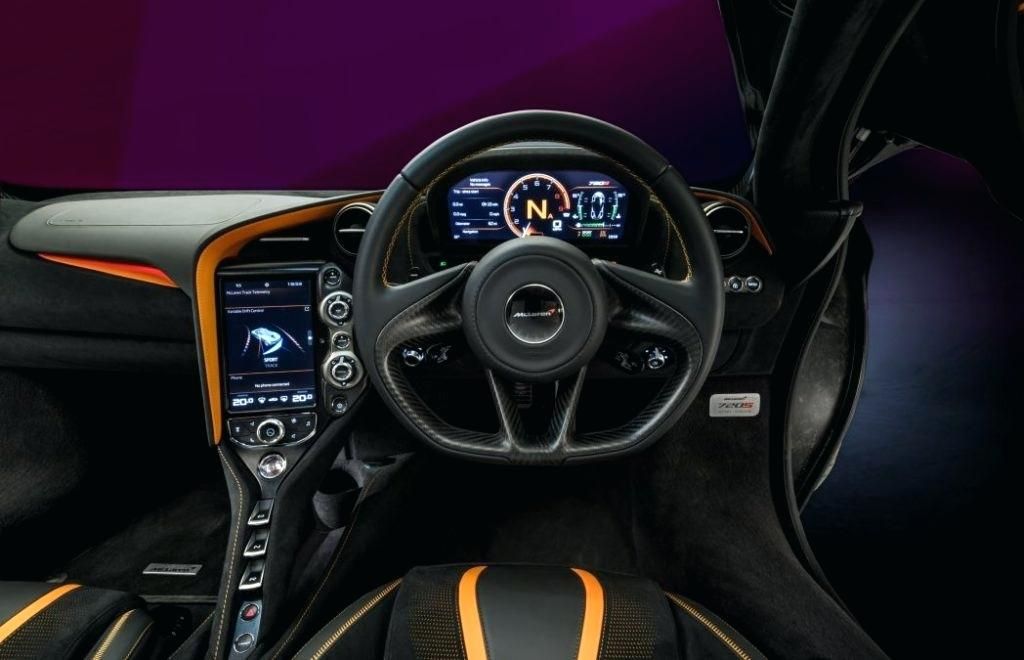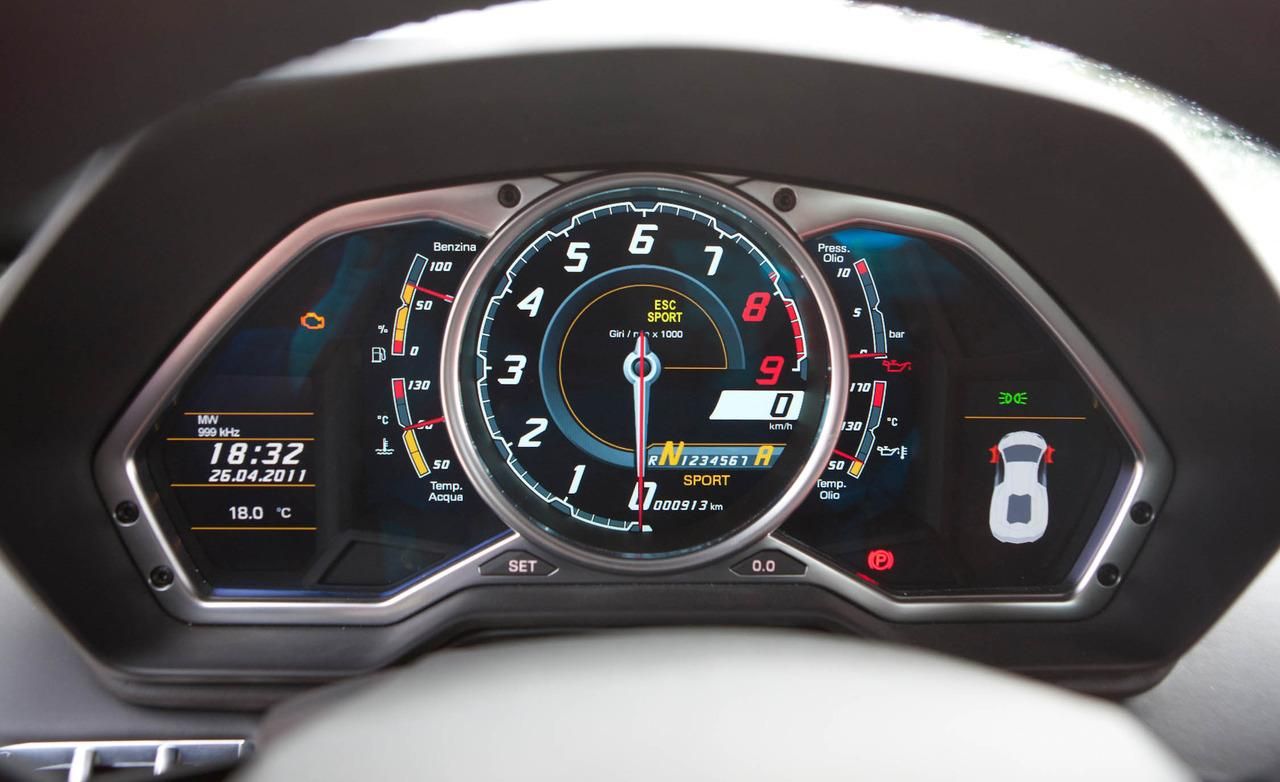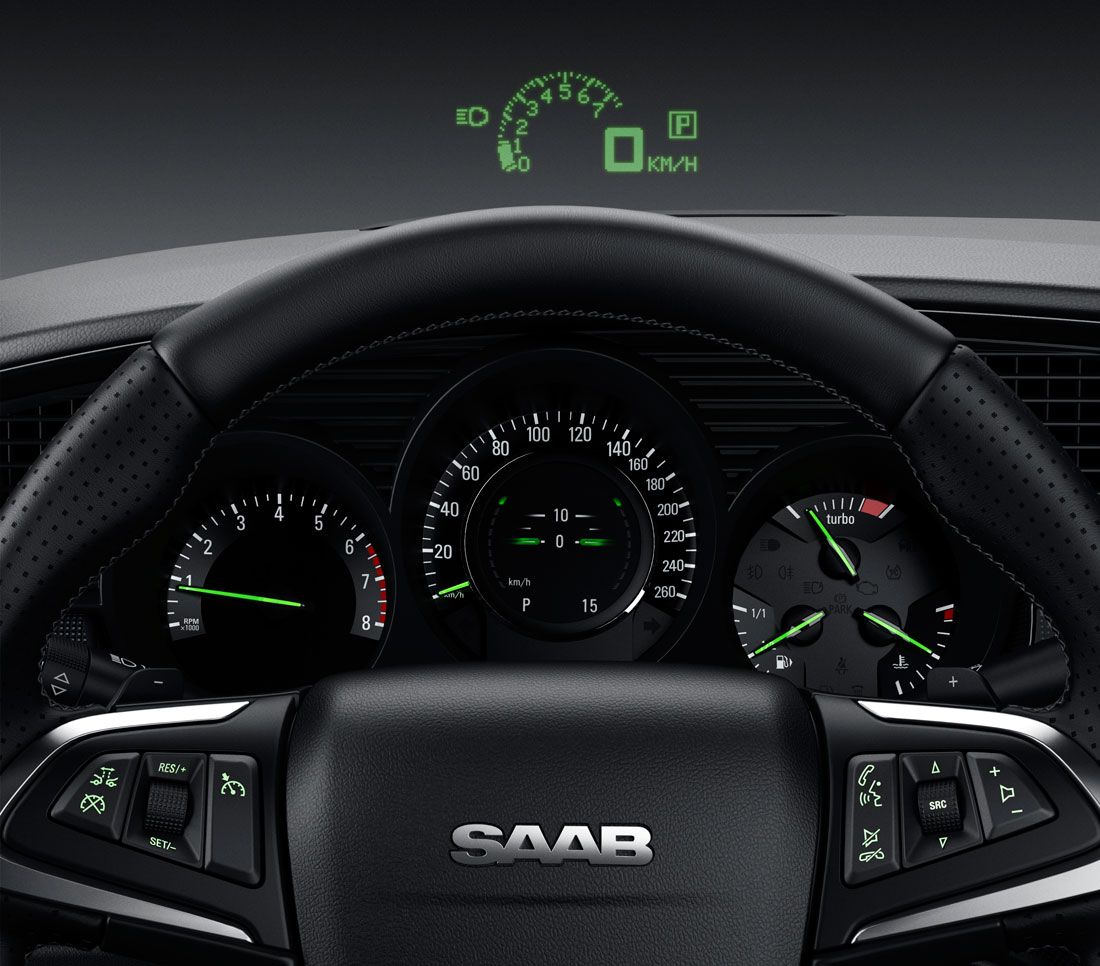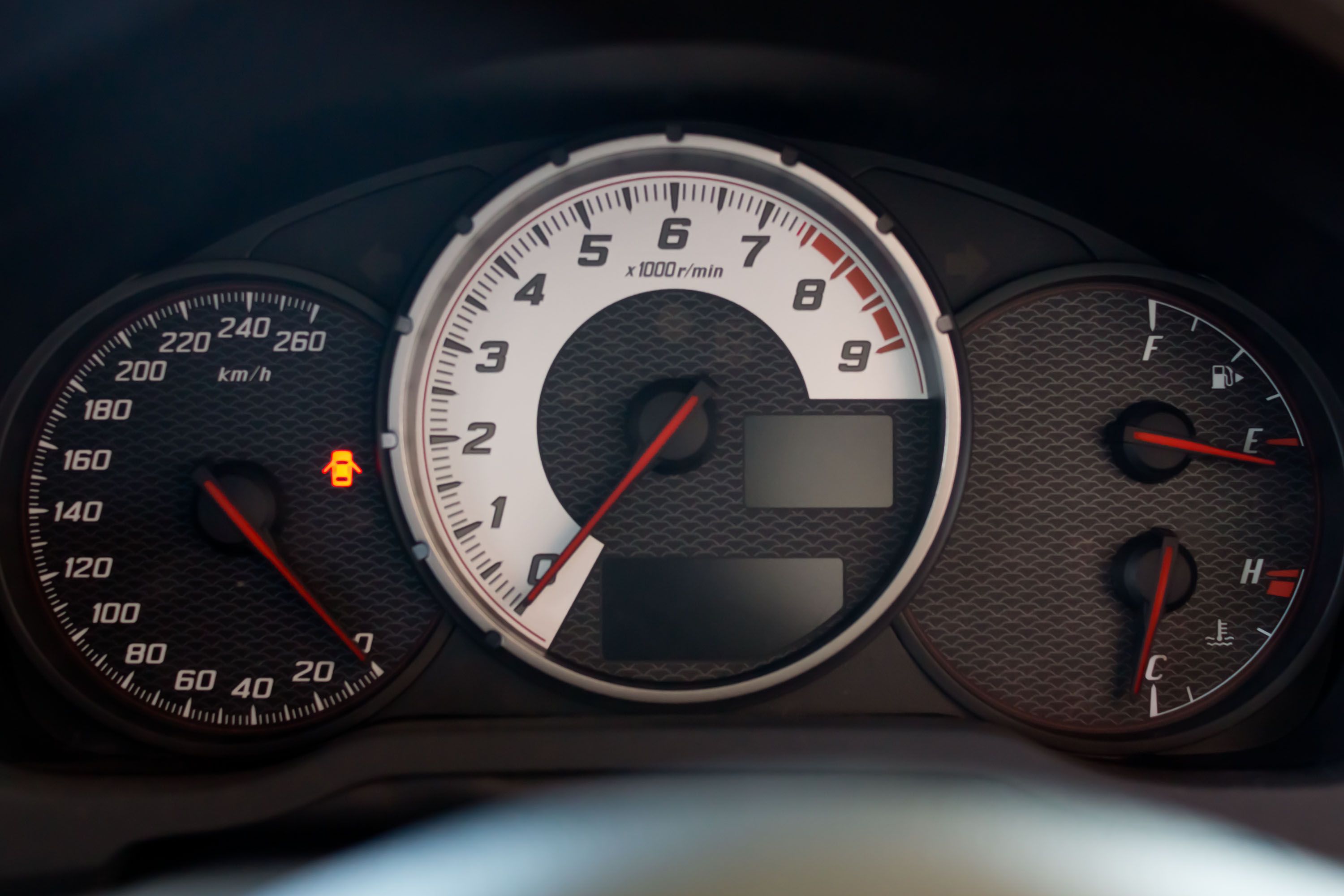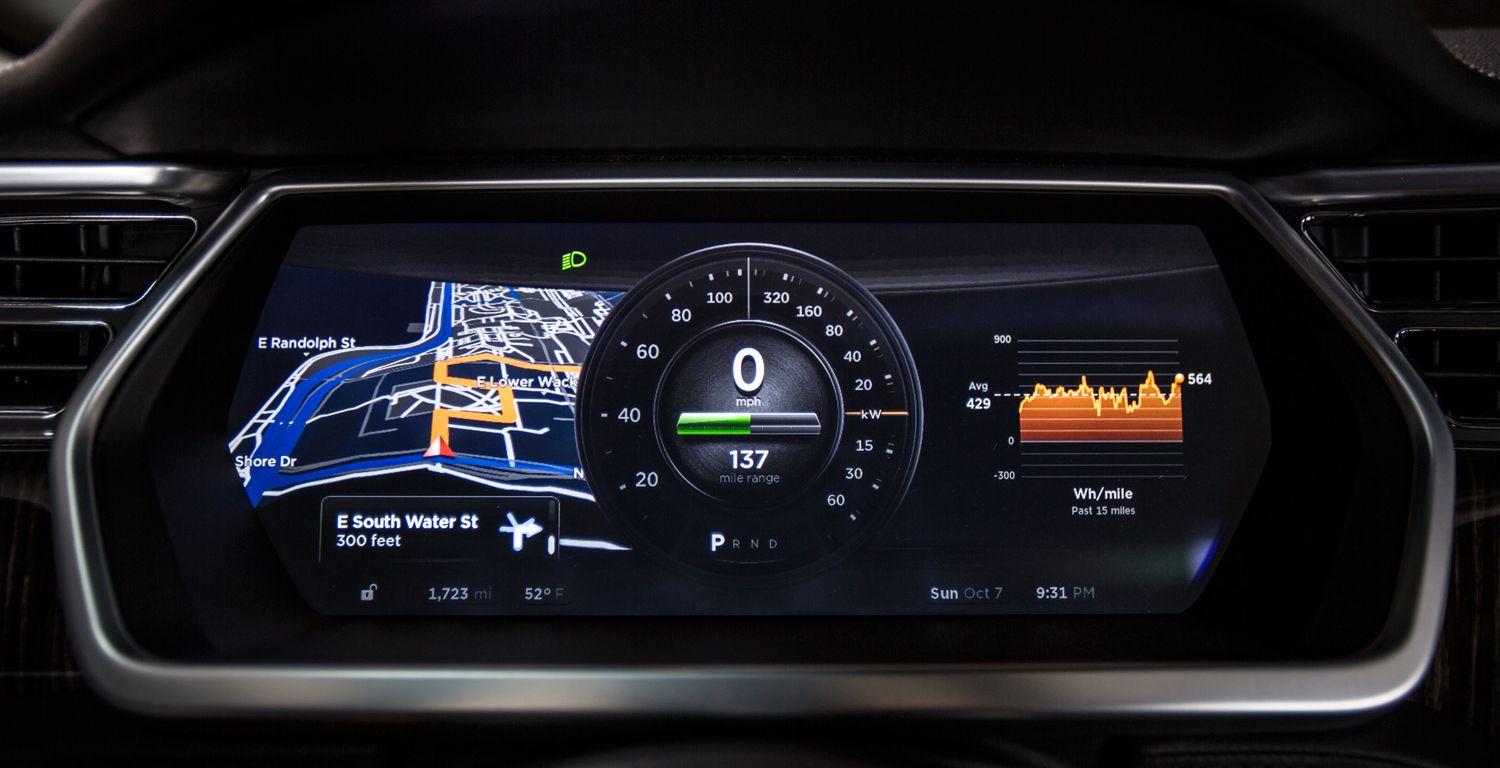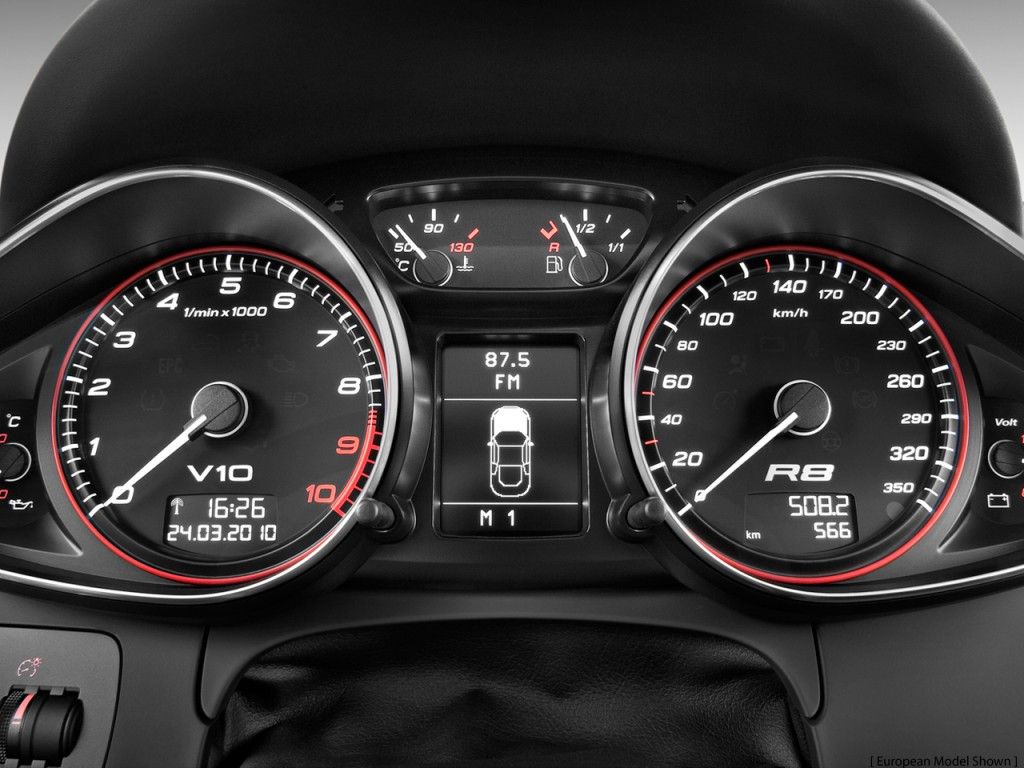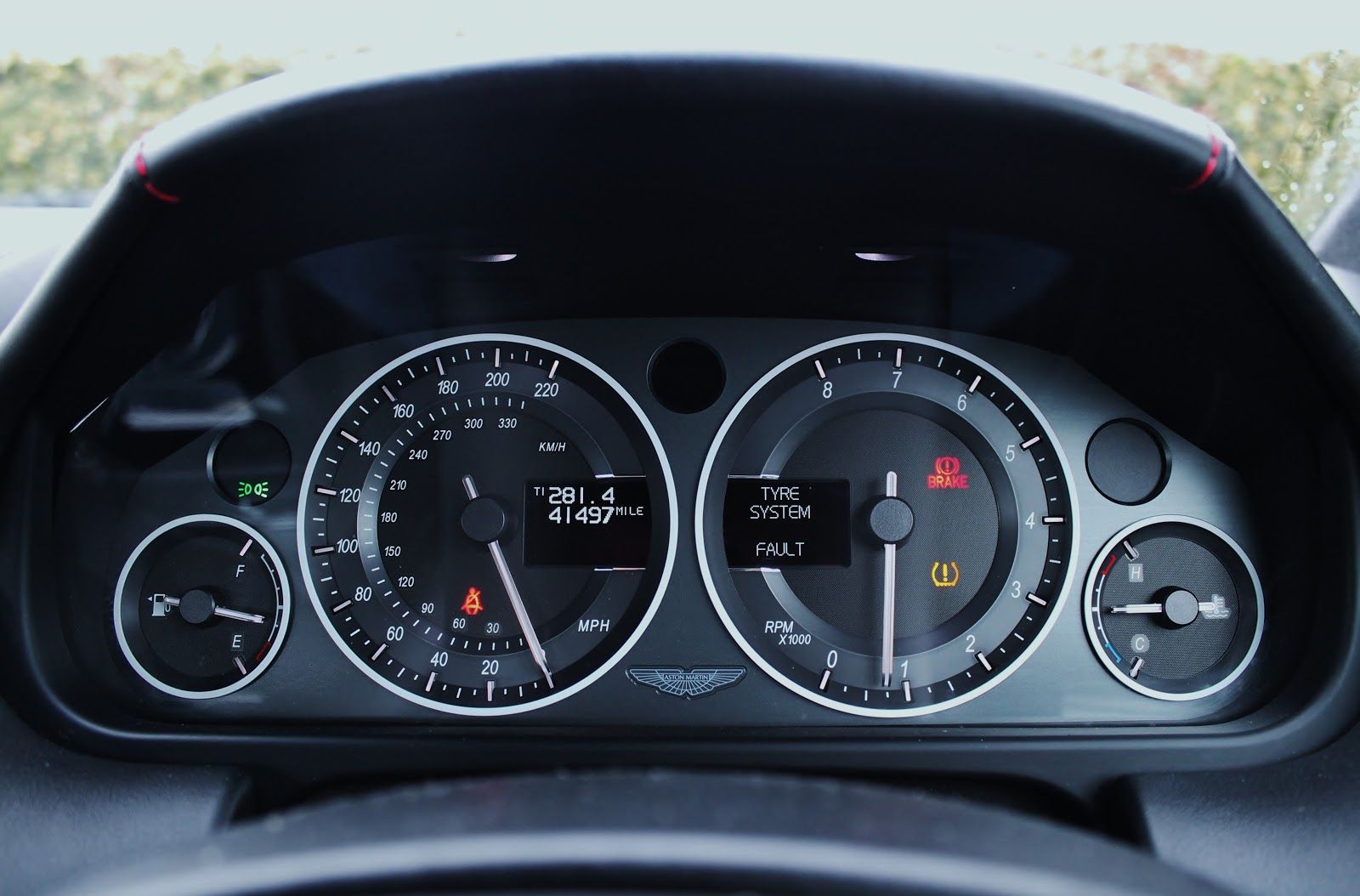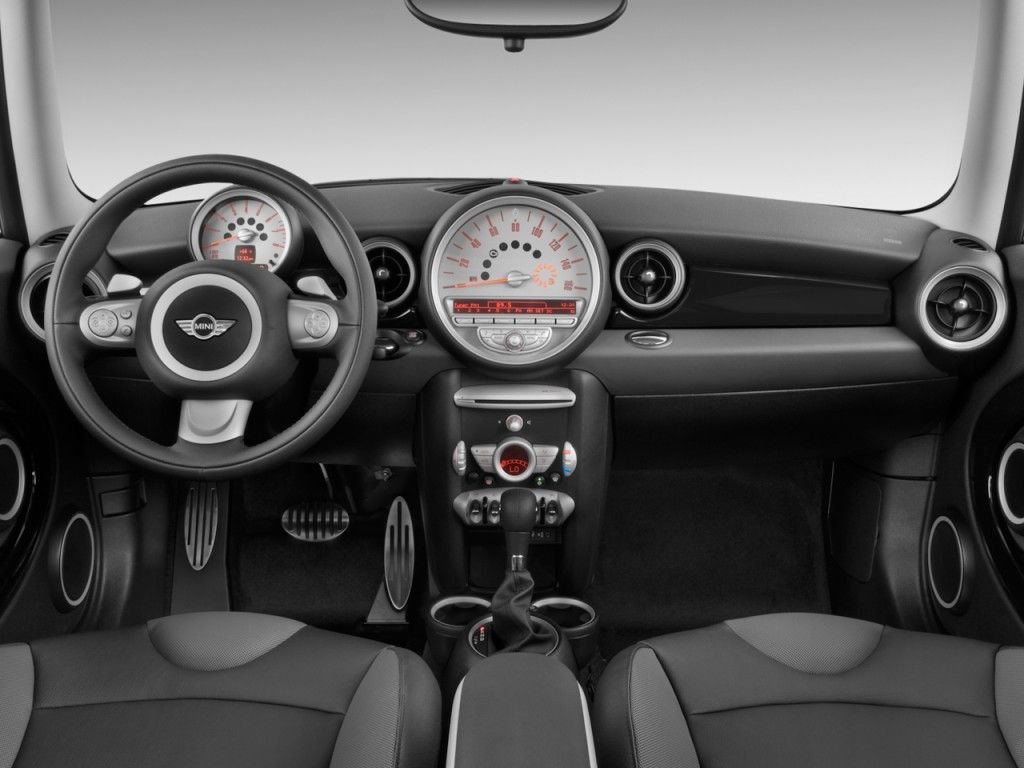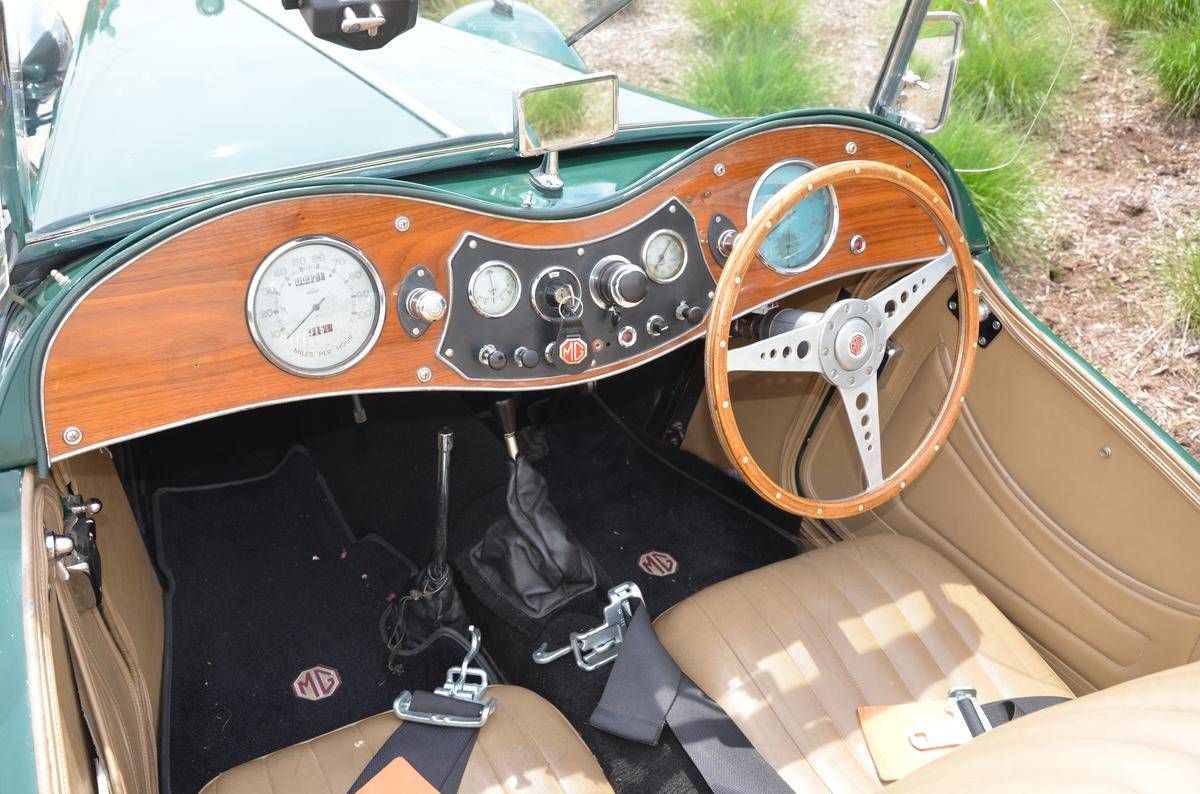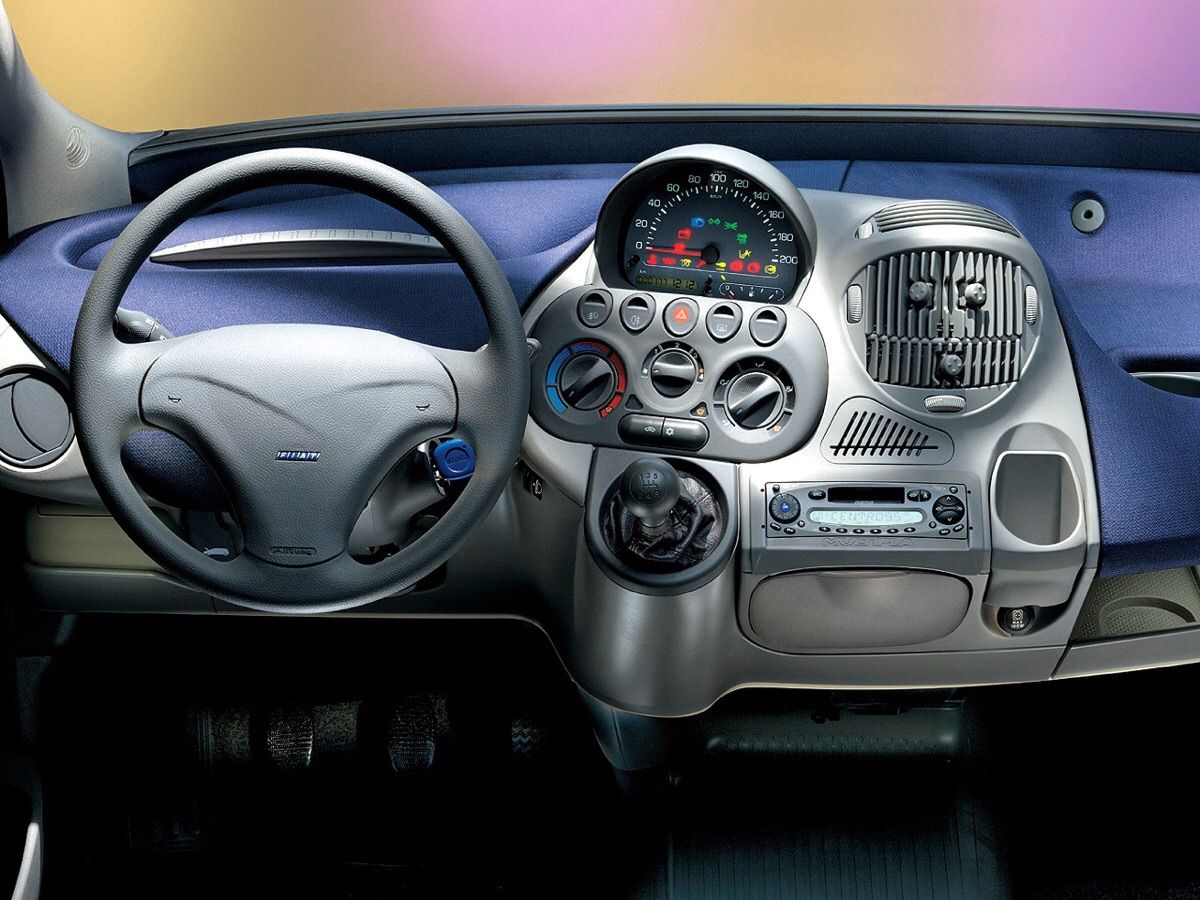One of the principles of quantum mechanics is Heisenberg’s uncertainty principle, which states that you can either know the position of a particle or its momentum (or speed). When you are driving a car, you need to know both where you are and how fast you are going. You must also know other stuff like the oil temperature or the rotations of the engine crankshaft. That’s why the instrument cluster is an essential part of the car. Over the years, instrument clusters have evolved, becoming more precise and more stylish, although the traditional round shape has remained a staple, despite some cars having horizontal-looking gauges.
With the latest trend in digital dashboards, you can have any information you might need or want to be displayed right in front of you and even in digital dashboards, carmakers try to keep the traditional round gauges. At the same time, in many cars, the instrument clusters have also combined usability and style, becoming an inherent part of a car’ interior. We have combed the Internet and selected 10 greatest instrument clusters fitted to a car. In addition, we have selected some clusters that don’t really make sense, even though some of them are very cool, interesting and represent great attempts from carmakers to instill some originality, but at the end of the day should’ve probably been left plain and boring.
20 Lamborghini Reventon
The Lamborghini Reventon was at one point the most expensive Lambo ever made and there were just 20 cars ever made, according to thedrive.com. Of course, for such an expensive and exclusive car, Lamborghini couldn’t fit just regular gauges or even traditional-looking digital ones.
Instead, they went for something that should have been fitted on an X-wing starfighter.
In this way, if you drive a Reventon, you can get information about the speed, the RPM, temperatures, and fuel levels, and, if necessary, you can also use it to fire a proton torpedo in the thermal exhaust shaft of the Death Star.
19 Pontiac 6000
In the 1980s, GM started experimenting with digital dashboards and the Pontiac 6000 is the result of one of these experiments. They probably wanted to make it as digital as possible so they abandoned the idea of round gauges altogether and fitted the tachometer on a horizontal column, though the numbers were painted, rather than displayed. The speed was shown on a tiny display next to the tachometer and because other gauges didn’t fit in front of the steering wheel, they expanded the instrument cluster to cover the entire length of the dashboard.
Then, to make it even more futuristic, they decided to add a million buttons, not just on the dashboard, but on the steering wheel as well. What’s worse, the buttons on the steering wheel only controlled the radio, although at the time probably the radio was the only thing that could be controlled by buttons.
18 Bentley Blower
The fact that this Bentley Blower probably has the most gauges that a car can possibly have is forgivable for two reasons.
It was built between 1927 and 1931, according to telegraph.co.uk, so cars were pretty new and the idea of making things compact might not have occurred to the designers of the time.
It also had a narrow body, so the gauges had to be spread all across the dashboard and it’s not like there had to be room for stuff like airbags or a stereo. In addition, at the time there weren’t smartphones, so the passenger was entertained along the way by having lots of fun gauges to look at.
17 Citroen CX
Even if you are not a fan of Citroen, you must have definitely heard about the legendary DS and its self-leveling hydropneumatic suspension, which was so good that it could balance the car on just three wheels, according to Jalopnik. When Citroen set up to make the replacement for the DS, the CX they had a pretty tall order to come up with something even better than the ages-ahead-of-its-time DS. One of the things that they came up with was the weird-looking gauge cluster.
The CX debuted in 1974, according to citroenet.org.uk. To give you an idea about the time, digital clocks only had gone mainstream a decade earlier and digital calculators had just started to become small enough to not require AC power. Because the technology for a digital dash was not available, Citroen fitted the CX with what they thought was the next best thing, rotating drums. It was an odd set-up, which is why it probably didn’t catch on.
16 Fiat Uno Turbo
The Fiat Uno Turbo was the Italian carmaker’s response to the wildly popular Peugeot 205 GTi in the 1980s. The hot hatch market was still pretty new, with the Mk1 Golf GTI having debuted a decade earlier.
There wasn't much that car makers could do to compete with each other, other than styling, so Fiat installed a digital instrument cluster in some models of the Uno Turbo.
It was a clever attempt at making the car look more futuristic, even though in some cases the instruments were difficult to read because of glare. The Uno Turbos with digital gauges were pretty rare and the model didn’t catch up with the 205 GTi.
15 Buick Reatta
Buick Reatta is another example of GM trying to fit a digital dash to its cars in the 1980s. The Reatta was fitted with a monochrome digital cluster and even had a CRT touch screen display in the center console. While it looks elegant, there was one drawback. A lot of drivers complained that the digital gauges failed and often after a short period of time.
I am no expert in electronics, but what I understood from online forums, the main problem was that GM used Vacuum Fluorescent Displays (VFDs) for clusters and they would often fail due to vibrations and heat. In any case, in the early 1990s, GM stopped using digital instrument clusters and only recently returned to them.
14 Honda Civic
Honda Civic is also known for its futuristic design and the use of digital instrument clusters. However, it’s not the fact that the clusters are digital what landed the Civic in our list of “bad” gauge clusters. It’s how they are positioned.
The dashboard in front of the driver seems to obscure the view in front of the car because it is styled in two tiers. Also, a lot of drivers take issue with the fact that there are too many displays scattered around the console.
The good news is that Honda addressed these issues, although it took them a decade or so, and the latest model has nice digital instrument cluster with round gauges.
13 Lexus LFA
Moving on to some of the best instrument clusters out there and we start with the Lexus LFA. Developing the LFA, Lexus engineers put in a lot of work paying attention to every little detail. According to popularmechanics.com, Lexus originally started building the LFA from aluminum, but then switched to carbon fiber and developed a special loom that weaves carbon-fiber specifically for the LFA. Toyota, which owns Lexus, ended up losing a ton of money on the LFA, but they created one of the best supercars in the world.
As it is one of the best supercars in the world, the LFA also was fitted with one of the best-looking digital gauge clusters, which is minimalist, classic and yet displays all the information needed in one digital dial and some little panels around it.
12 Ferrari 812 Superfast
The instrument cluster on Ferraris is iconic and usually features a large tachometer in the middle. Last year, the Italian supercar maker unveiled its new Ferrari 812 Superfast, a 6.5-liter V12-powered Berlinetta, which represents the most powerful and fastest Ferrari, according to Ferrari.com.
The 812 also received a new steering wheel that has a row of LED lights that show when to shift gears.
The new instrument cluster kept the iconic tachometer in the middle, which can have a different background and it is surrounded by two fairly large screens that can display the speed, the oil pressure, temperature, or other information.
11 Honda S2000
The Honda S2000 is a superb two-seater roadster and it has one of the best digital gauge clusters. In a carthrottle.com poll in 2013, 22% of the 13,000 people that voted chose the S2000’s cluster as the best in the world. The decision to stick a digital cluster on the S2000 was perceived as an odd move because it came several years after the old digital dashes had been ditched and the new ones hadn’t gone mainstream.
According to some sources, Honda drew inspiration from the instruments in its Formula 1 cars. In this way, the S2000 has a great-looking gauge pod with readable indicators and it’s one more reason why we are sad that the S2000 was discontinued.
10 McLaren 720S
McLaren 720S is one of the coolest and fastest cars you can buy. For a starting price of $284,745, according to Business Insider, you get a beast with a 4.0-liter twin-turbocharged V8 that develops 710 horsepower.
Inside you are embraced by a luxurious and comfortable interior and some extra “cool” points should be awarded to the 720S for its unique instrument cluster.
The 720S has an instrument cluster that it’s foldable.
The driver can choose to keep in folded, in which case he has a slit that displays the basic necessary information, or he can expand it and unveil a large screen that can display all sorts of info.
9 Lamborghini Aventador
We know that Lamborghini’s flagship car, the Aventador was inspired by the limited Reventon that we have mentioned earlier in this article. And while we can see the inspiration on the exterior, we are glad that Lamborghini didn’t use that weird-looking, Star Wars-inspired cluster from the Reventon.
Instead, the Aventador features a large digital round display with the tachometer that also displays other information like the speed, the selected gear, and the odometer. Four smaller displays around the bezel of the tachometer display information like fuel levels, water and oil temperature and pressure. The ensemble is complemented by two small screens on the sides that can provide some auxiliary information.
8 SAAB 9-5
Car brands quite often disappear, with some being forgotten and others making car enthusiasts feel sorry that they are gone. One of the latter group is SAAB, a car brand that went defunct because its engineers cared so much about the cars they were building that they made them way too expensive for a brand that didn’t enjoy much popularity among consumers in the first place.
SAAB cars had very interesting instrument clusters, with an interesting feature called the Night Panel, which had been fitted to many cars, including the latest 9-5. At a press of a button, the instrument panel went dark with only a part of the speedometer remaining lit.
This was made to underline SAAB’s aeronautical heritage and was interesting, though a bit useless, feature.
7 Toyota GT86
The Toyota GT86 is one of the best cars you can buy base don the price-to-fun ratio. For $29,000 in Europe (in the US the GT86 is marketed as Scion FR-S with a similar price), a driver gets a simple coupe with a 2.0-liter engine developing 197 bhp, rear-wheel drive, and six-speed manual gearbox, according to autocar.co.uk.
The inside is very stylish and simple and the instrument cluster is a great example of minimalism, featuring two analog gauges, with a larger tachometer in the middle and a slightly smaller speedometer on the left and a digital screen on the newer models on the right.
6 Tesla Model S
What makes the instrument cluster on the Tesla Model S great is that it’s not a cluster, but just one big screen on the driver’s console. The screen is divided into three parts and then there’re lots of options that the driver can use.
Drivers usually opt to keeping a round speedometer in the middle with a battery level bar in the center, while the left and right sides of the display can display navigation information, media, tire pressure, energy consumption, or just navigate through a menu that offers options to operate the climate control, sunroof, etc. In combination with the huge center console display, the Tesla Model S has one of the most usable instrument panels fitted to a car.
5 Audi R8
The older Audi R8 models have an awesome instrument cluster with analog gauges and a monochrome screen in the middle. It’s minimalist and informative, just what you’d expect from a great supercar.
The last Audi R8 received a digital instrument cluster that expanded the driver’s range of possibilities as to what information he wants to access.
It can display a large tachometer and speed shown in the middle and navigation on one side, or it can display information about fuel consumption in the middle, or a big map with navigation and two smaller dials with speed and engine RPMs on the sides.
4 Aston Martin DBS
There are cars and then there is Aston Martin. With stunning looks and great performance, Aston Martin is sophisticated, but also very simple, following the traditional formula for a Grand Tourer: a big engine in a stylish coupe. To make Aston Martin even cooler, the developers even gave it a special key and when a car key is called “Emotional Control Unit” you know that you are about to have one of the best drives of your life.
The latest Aston DB11 and Vantage have received digital dashboards, but it’s the analog ones from the older models like the DBS that we love. The chrome dials look like they’ve been designed by Swiss watchmakers. They are minimalist yet highlight the luxurious nature of the car.
3 Mini Cooper
The huge speedometer located in the middle of the dash has become a symbol of Mini Cooper vehicles. An answer on Quora, cited a now-unavailable article on the Mini USA website, which states that the speedometer, fuel gauge, and warning lights were placed in the middle as a tribute to the Mini Cooper that won the Monte Carlo rally three times and the speedometer helped the navigator access speed information.
Nevertheless, Mini buyers don’t usually have navigators and the speedometer in the middle is considered an annoying feature by a lot of drivers.
The latest cars had this issue addressed and the speedometer is moved in front of the steering wheel, where it belongs, while the round bezel in the center of the dash now houses the radio controls and a navigation screen.
2 MG TC
If you think that having the speedometer in the middle is annoying and distracting then the location of the speedometer on the old MG TC will make you furious, because it’s actually located on the passenger side, as far away from the driver as possible without removing it from the car and throwing it away, which wouldn’t have made much of a difference, because the driver doesn’t see it anyway.
It would have been understandable if the MG TC had some special dash design that wouldn’t allow placing a gauge in front of the driver, but there’s lots of room and the driver has in front of him a huge dial of the tachometer.
1 Fiat Multipla
The Fiat Multipla is one of the ugliest cars ever made and I am not just saying it. Around four years ago, carthrottle.com conducted a poll and out of 3,303 votes, 33% said that the Multipla is the ugliest car. When Fiat was designing the Multipla they saw that it was hopeless, so they went ahead and made the interior just as horrible. One of the key aspects of the interior is the fact that everything that a dash houses was stuck in the middle, including the gauge cluster, which is not even a cluster, but just the speedometer and warning lights. There’s just no reasonable explanation for placing the speedometer in the middle and not adding an rpm counter or other gauges in a car that’s the size of a small house.
Sources: carthrottle.com, businessinsider.com, popularmechanics.com, autocar.co.uk

